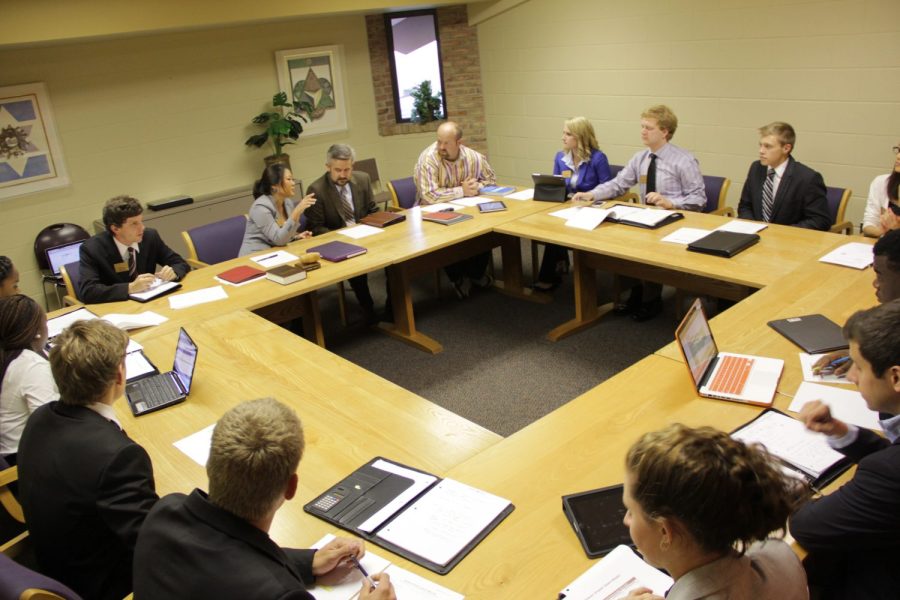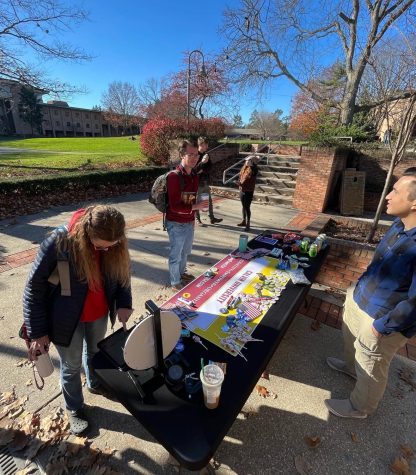Governance review is more important than it sounds
SALT is one of many leadership teams and committees that play a role in Calvin’s governance structure.
A task force composed of faculty, staff, administrators and a student representative have been tasked with reviewing the structure of governance at Calvin. Governance describes the structures and processes for decision-making within the university.
The task force is a subset of the Committee on Governance (CoG), one of several standing committees that are a part of the governance process at Calvin. The CoG is mandated to review Calvin’s governance structure every five years but also keep an eye on and make changes in between formal review processes. Since the last governance review in 2017, Calvin has undergone numerous changes, including the switch from college to university, significant faculty and staff cuts, the end of interim and the ongoing shift in the credit system. A Best Christian Workplaces survey last year also raised concerns about faculty and staff workloads and morale.
This year’s governance review, which was delayed by a year due to COVID-19, will address some of the structural concerns that have arisen, according to Jolene Vos-Camy, French professor and chair of the task force.
The downsize may factor into the current review in other ways as well. Frustrations with administrative decisions have influenced priorities in task force discussions, though they are not the sole focus of the review.
“We have a list of decisions that were made over recent years that our colleagues keep pointing at … and we’re using them as case studies,” said Vos-Camy.
David Koetje, professor of biology and a member of the task force, said recent cuts to faculty and staff is one such decision. Another is administrators’ decision to have the Professional Status Committee reconsider former social work professor Joseph Kuilema’s reappointment after they became aware that he had officiated a same-sex wedding.
“When we have administrators, especially the Provost, who revisit decisions that were made, that doesn’t go well. That raises all kinds of questions about what kind of power we really have as this shared governance structure,” said Koetje. Shared governance refers to the ways in which faculty can influence, approve, reject and speak into decisions made at Calvin.
For some faculty members, a source of concern was not the decisions themselves but how they were introduced by the administration. Economics professor and Faculty Senator Sung Soo Lim said it was not always clear “what was the rationale behind all the changing.”
“It’s not about how they change the government system. The focus, I think, should be more about transparency,” said Lim.
The governance review is intended to address structures, not specific decisions made by individuals, according to Vos-Camy. And while lack of transparency can’t necessarily be resolved through structural changes, one goal of the review is to address structural factors which could be contributing to this issue.
The current governance system was designed for an institution with more faculty than Calvin now has, and the decreased size of the faculty body may factor into the review.
The system was also designed for a college. “Before [becoming a university in 2019], we had three academic divisions where the number of departments was roughly equal between the three academic divisions, but now we have five schools, and they’re different sizes and different structures,” said Vos-Camy.
This, according to Vos-Camy, leads to questions about representation for each department.
Another immediate concern, according to Vos-Camy, is a lack of materials explaining how different governing bodies at Calvin work together.
Currently, Calvin is governed by administration, a faculty senate and a series of committees which include administrators, faculty and sometimes staff and students. These bodies have overlapping but theoretically distinct roles.
“A lot of people on campus are not aware of what our structure is, and one of the very basic things that we are doing is just making it visually available to everyone,” said Vos-Camy.
Ultimately, not all concerns with current governance can be addressed through structural changes, according to Vos-Camy.
“Sometimes, it’s bigger than the structure. The structure feeds into it, but that’s not everything, because you’ve got people involved, and people are complicated,” said Vos-Camy. “We try to make the structure … to make it function as well as it can, no matter who’s in that system.”











